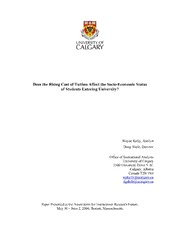
ERIC ED491010: Does the Rising Cost of Tuition Affect the Socio-Economic Status of Students Entering University? PDF
Preview ERIC ED491010: Does the Rising Cost of Tuition Affect the Socio-Economic Status of Students Entering University?
Does the Rising Cost of Tuition Affect the Socio-Economic Status of Students Entering University? Wayne Kelly, Analyst Doug Shale, Director Office of Institutional Analysis University of Calgary 2500 University Drive N.W. Calgary, Alberta Canada T2N 1N4 wpkelly@ucalgary.ca dgshale@ucalgary.ca Paper Presented at the Association for Institutional Research Forum, May 30 – June 2, 2004; Boston, Massachusetts - 1 - Does the Rising Cost of Tuition Affect the Socio-Economic Status of Students Entering University? Overview As tuition fees increase, universities need to be concerned whether costs have risen to a point where students from low-income families are being disproportionately excluded. Given the rates of increases in tuition fees in recent times, this outcome seems plausible and is often the opening point of discussions on this matter (see for example, the position of the Canadian Association of University Teachers, 2002, cited below). However, trends in university enrolments relative to trends in tuition fees would suggest otherwise. Consequently, we take as our starting point a review of what the existing studies have to say in this regard. We next review available data pertaining to the question of whether observed enrolment growth is attributable to increases in the proportion of high SES students. We found that the methodologies used and the time periods encompassed differ to an extent that the generalisability of the results necessarily need be constrained. The implication from our point of view is that we cannot be certain what the answer to the question would be for our University. Therefore, we devised a study using a novel methodology based on a national census data base and students’ zip codes to develop indicators of socio-economic status for individual students. For reasons we elaborate on later in the paper, we restrict our attention to entering high school graduates (freshmen) – and to general arts and science bachelors programs. The study compares results from the University of Calgary freshmen cohorts of 1991 and 2002 to assess whether the socio-economic mix of the student body has changed and if this change might be due to increases in tuition fees. Our methodology has a number of advantages over the available alternatives. We do not need to rely on surveying students (with the attendant problems of cost, comprehensiveness and unreliability of student- reports of family circumstances). We are also able to use multiple indicators reflective of socio-economic status rather than relying on a single index. The results of our study indicate that the freshmen students in 2002 come from family circumstances that are (significantly) socio-economically better than those of the freshmen cohort entering in 1991 (which was prior to a period of substantial increases in tuition fees at the University of Calgary). An Elaboration of the Issue As funding support from the public purse has diminished, many universities have attempted to compensate by raising the level of tuition fees charged (for example, - 2 - Business Week Online, April 28, 2003 reports that, “Last fall, 16 states jacked up tuition by more than 10% and this fall promises to be worse”). As this quote suggests, increases in tuition fees have been compounding. This potentially leads to additional financial stress for many students. Moreover, one would expect that students from lower socio-economic backgrounds would find escalating tuition fees to be more of a barrier to university attendance than would students from wealthier circumstances. The following statement by the Canadian Association of University Teachers (2002) is typical of this point of view: “Today, however, due to record high tuition and other fees, more and more students who are interested in and capable of attending a university or college are unable to do so. Following a decade of steep increases in tuition fees and slow wage growth, modest- and middle-income households are struggling to finance the costs of higher education” (pg. 1). The CAUT analysis of tuition fee levels, which is partly based on data reported by Statistics Canada and partly extrapolated from a case study of tuition fees at the University of Toronto, indicates that since the early 1980s, tuition fees in Canada have increased much faster than the rate of inflation. The inflation adjusted cost of Arts tuition increased by over 40 percent (although these fees were still 9 percent lower than fees in 1972). During the period 1992 to 2002, fees increased by some 67 percent in inflation- adjusted dollars. (The increases in tuition fees for professional programs were considerably more – in the past decade fees for dentistry jumped by 248 percent, fees for law school went up by 124 percent and fees for medical school by 201 percent). Since the effects of higher tuition levels can be mitigated by higher levels of income, the CAUT analysis also looked at the “affordability” of university tuition. The analysis compared tuition fees to the earning ability of a middle-class household (using the number of hours needed to work to pay tuition fees based on the corresponding year’s average hourly manufacturing wage). The study reports that the number of manufacturing hours needed to be worked to pay tuition was stable through the early 1980s at around 85. In 1990, this figure jumped to 102 hours and by 2002 it had increased to 197 hours. Another national perspective on affordability is offered by Quirke and Davies, 2002 who, citing Statistics Canada data, observed that, “Tuition rose by 125% between 1980 and 1998 while family income grew by only 1%” (pg. 88). The conclusion seems apparent – tuition is less affordable as measured by this characterization of income (this, of course, begs the effects that enhanced student financial aid might have – a point we come back to later in the paper). - 3 - But does the available evidence on enrolment support the CAUT assertion that accessibility has been materially constrained? Let’s look at what the general enrolment situation has been as tuition fees have increased. Tuition Fee Levels and Enrolment Trends Contrary to what one would expect if increased tuition costs were a wide spread impediment to attending university, enrolments generally have continued to grow as have participation rates. Junor and Usher, in The Price of Knowledge: Access and Student Finance in Canada (2002), indicate that university enrolment increased by between 13% and 25% in most provinces from 1987 to 1999 (British Columbia’s increase was 40%). Similarly, participation rates of 18 to 21 year-olds have increased from about 11% to 17% nationally over that time. The national level data actually illustrate that as tuition fees have increased, so have university enrolment and participation. Moreover, available data show that growth and participation in high tuition provinces is not different from growth and participation in low tuition provinces (which is contrary to what we would expect if enrolment were price sensitive at present levels). For example, Kozhaya (2004) reports that although British Columbia has the second lowest tuition fee levels in Canada, it has the lowest participation rate of 20-21 year olds in the country. Kozhaya also notes that, “Despite Quebec’s low tuition fees its university enrolment is among the lowest in Canada” (pg. 2). Furthermore, tuition fees had been frozen in Quebec for about 20 years but the unfreezing of fees and their doubling within two years had no impact on the enrolment rate which kept rising. We also have some data from the U.S. that shows the same trend (Heller, 2001). The conclusion to all this is, “contrary to popular belief, a decade of rapid rises in tuition fees and student loan borrowing has not reduced overall accessibility in the Canadian post-secondary system” (Junor and Usher, 2002). The authors go on to state that students are coping by using financial aid support – and more support has come available over the period of heavy tuition increases. Students also are working more – in summer employment and particularly in part time work during term. However, the “macro-level” indication of no direct relationship between enrolment levels and tuition fees does not completely address the question of whether the rate of enrolment growth is disproportionately greater amongst the segment of population that is financially better off than is the rate of growth for lower socio-economic groups. Although tuition fees have increased substantially at most universities, tuition has been held level or has been lowered in others, potentially obscuring the issue of whether university education is affordable for all socio-economic groups. Another complexifying factor is that students from different socio-economic strata may use compensatory mechanisms (such as student loans and concurrent employment) in different ways to accommodate to increasing costs – thus confounding our understanding - 4 - of whether the increased cost of attending university has a differential impact on participation by socio-economic status. We do know that overall student indebtedness has been increasing (Hemingway, 2004) - but it is not entirely clear if this is occurring to a disproportionate degree amongst low SES students. We also know that in Canada a government Student Loan program has been well supported and subscribed to (Junor and Usher, 2002) – but again, it is not clear whether there is some differential effect on student participation according to their socio-economic status. We should acknowledge that there is evidence of an “SES exclusivity effect” resulting from rising tuition levels in professional programs (such as law, medicine, dentistry) on the associated student body. For example, Kwong, et al (2002) found that almost half (43.5%) of the medical students responding to their survey came from neighborhoods with median family incomes in the top quintile. However, the costs and social dynamics associated with the effects of tuition fees for professional programs do not bear directly on the more general view we wish to take on accessibility to university study. Similarly, we do not deal specifically with tuition costs and participation in graduate study (if only because the issue of costs would necessarily extend to a consideration of graduate student support and would introduce a new complexity that would require an investigation of its own to elucidate). The indirect evidence described above does not bear directly on the question of whether high costs of tuition reduce accessibility to university for students from low socio- economic backgrounds at a regional level. Increases in enrolments and participation rates could potentially be the result of more well-to-do students attending university. Moreover, dealing with data aggregated over regions or multiple universities can mask local effects. For universities that are regionally based with respect to the clientele they attract, accessibility for local students is an issue of some political and strategic significance. Hence, it would be very useful to know if increases in tuition fees are disproportionately excluding students with lower socio-economic backgrounds from attending their local university. There are a number of studies that have had this kind of focus. Before we look at those studies we need to acknowledge the well-known fact that, “Studies for developed and underdeveloped countries generally show that children from higher income families are more likely to obtain a postsecondary education” (Christofides, Cirello and Hoy, 2001, pg. 180). The issue of rising tuition fees and equity is really about whether an existing gap has got larger. Tuition Fee Levels and Student SES One of the methodologies that has been used to investigate the effect of rising tuition fees on the SES of students is to survey students as they enter the university and ask questions that can be used to ascribe socio-economic status (a study by the University of Toronto, 2003, is an example). This approach requires time series data since a baseline must be determined for a period of lower tuition levels in order to ascertain if the socio-economic - 5 - mix at higher tuition fee levels has changed. The results shown in the University of Toronto study are for the percentage of students reporting parental income below $50,000. For 1999, that was 32 percent, and 38 to 39 percent for the years 2000, 2001 and 2002. The varying and low response rates of the study necessarily temper the certitude that can be accorded these results. In addition, socio-economic status is ascribed on the basis of student reported parental income data (which is of suspect but indeterminate reliability). Quirke and Davies (2002) used a variation of this approach in their study of the impact of tuition increases on student SES at the University of Guelph. This study also relied on student responses to surveys administered to them at point of entry to the University – in this case, the questions of relevance were about parent’s education and income. Survey results were reported for 1987, 1992 and 1998. Comparative data on the Ontario population was also cited (based on Statistics Canada data) to provide a normative assessment of the representative-ness of the student body at the University of Guelph. As a result of their investigation Quirke and Davies concluded that, “Between 1987 and 1998, Guelph students were increasingly drawn from relatively affluent homes and had parents with a modicum of formal education”. The University of Victoria (2002) has also undertaken a “long-term study to monitor and analyse the effect of tuition increases on affordability and access” from the perspective of the University of Victoria. Although they do administer an incoming student survey, the data obtained are not what they use to assess equitability of access. Instead, they use the postal codes derived from three years (2000, 2001, 2002) of applicant and registration data to determine the median neighbourhood income for these groups of students (based on Statistics Canada, 2000 data). The study concludes that, “there is a trend of increasing median incomes over the three years. However, there is no evidence that the trend is the result of tuition increases. Between 2000 and 2001 tuition fees increased by 5% while median neighbourhood income of registrants increased by 3.61%. Between 2001 and 2002, tuition fees increased by an average of 30% at UVic and the median neighbourhood income of registrants decreased by 2.44%” (pg. 3). Another approach that mitigates the problem of using student reported data on family income obtained by surveys is to use data gathered by mandated national agencies. This was the approach taken by Christofides, et al (2001) who used data from Statistics Canada’s Surveys of Consumer Finance (1975-1993). Their data show that regardless of year (1975 to 1993), “…the participation rates for the children of low-income families are much lower than those for the children of high-income families” (pg. 185). However, their data also show increases in the participation rates of all income groups (excepting for the family income over $100,000) - with the largest increases being realized in the low income brackets. However, the most recent data in that study was from 1993 and this preceded the period of high tuition increases. We would need to look to other studies to see if the Christofides et al results hold up. Also, the Christofides et al study did not distinguish between participation in college level and university education – an important distinction, as we will see. - 6 - Bouchard and Zhao (2000) analysed Statistics Canada’s Survey of Labour and Income Dynamics (1986 to 1994) and concluded that: “… differences in participation rates by SES exists in universities but not in colleges” (pg. 50). Moreover, “While the gap between the highest and lowest SES groups was increasing in absolute terms (the participation rate for the high SES group increased by 7.3 percentage points compared to 4.6 percentage points for the lowest SES group) it was decreasing in relative terms (participation increased by 33.5% for the lower SES group and only 22% for the high SES group)” (pg. 50). However, as with the Christofides, et al (2001), study the results do not incorporate the years when tuition fees increased sharply. Corak, Lipps and Zhao (2003) addressed the shortcomings of the Christofides, et al, (2001) study by distinguishing between university and college study and extending the time period studied to 2000. Their data sources were two Statistics Canada surveys – the Survey of Consumer Finances (1979 to 1997) and the General Social Survey (1986, 1994, and 2001). Their results also indicate a difference in rates of participation in university study by student SES – but the difference between participation rates for high and low-income groups has narrowed slightly. “According to one set of estimates we produce every 10% increase in parental income was associated with a 2.7% increase in the probability of university attendance during the mid-1980s; with a 4.3% increase in 1994; but with only a 2.5% increase in 2000” (pg. 2). These conclusions do not apply to college participation. Cervanen and Usher (2004) present what seem to be the most recent data pertaining to changes in the undergraduate student population by income. Their data are displayed in Figure 1. In 1965, slightly over half of the undergraduate population came from the highest income quartile whereas in 1998 only 35 percent were in the top group. There was a gain in relative distribution from 11 percent in 1965 to 17 percent in 1998 for the lowest quartile group. The conclusions across all these studies of university participation by family income are that: (1) there continues to be an absolute direct difference in participation rates by income with rates for high SES students being considerably larger than for low SES students, and (2) in recent times, the gap in participation rates has diminished in relative terms. - 7 - The Present Study Corak, Lipps and Zhao (2003) recognized that studies based on nation-wide data could potentially mask effects present at provincial or institutional levels. Tuition fee levels differ considerably across regions as do local economic factors. The mixed results from the institution specific studies at the Universities of Guelph, Toronto and Victoria certainly suggest that this is possible. Moreover, a regional university like the authors’ is highly dependent on the political and financial support of its local community and local concerns about economic elitism are not likely to be assuaged with generalizations derived from national data. It was primarily for this reason that we undertook to study the situation at our home institution – the University of Calgary. - 8 - We have chosen to take a generalized view of accessibility because we think that is the first order of concern among our community. For this reason, we do not consider the effects of fees at the programmatic level (specifically, tuition fees for professional or graduate programs.). Unlike with the University of Guelph and University of Toronto studies we have referenced, the U of C has not used surveys of newly admitted and/or registered students to gather information about them. Notwithstanding the questionable (but indeterminate) validity of student reported data on socio-economic characteristics, such data were not available to us in any event. Our approach is similar to the one taken in the University of Victoria study inasmuch as both studies use postal codes to reference SES related characteristics. However, the University of Victoria study limited itself to median family income as an operational definition of SES and the time period studied (2000, 2001, 2002) does not account for the effects of 20 to 30 percent increases in tuition fees introduced in British Columbia in 2002. Our approach is based on multiple SES variables and covers a period of eleven years during which there were large and compounding tuition fee increases. Previous work at the University of Calgary (Ahonen and Kelly, 1991) demonstrated that it is possible to link parental address and zip code information with census tract and other geo-statistical area identifiers. In this way additional profiling variables could be determined for students (for instance, both average and median household income, average and median family income, average value of owner-occupied dwellings, and percent of population aged 15 and over with post-secondary qualifications). In aggregate, this information provides a comprehensive socio-economic profile of freshmen students attending any given university. The present study applies a modification of this methodology to the Fall 2002 cohort of freshmen entering the authors’ university using a 2001 census data base. The previous study was also based on this general methodology and results are available for the freshmen cohort entering this university 1991. The 1991 results provide benchmark data for assessing whether the socio-economic mix of the entering students has changed over this time. More detailed analysis of these results and of the trends in admission requirements, tuition fee levels and the general socio-economic climate of the local community can provide a basis for informing the question of whether lower social class students are being disproportionately excluded from university study because of rising tuition costs. Enrolment and Tuition Fee Trends at the University of Calgary The funding and enrolment patterns at the U of C parallel the national trends. The general Arts/ Science tuition fee increased from $1,168 in 1990 to $4,380 in 2003. That is a 275% increase (or 168% in constant 1990 dollars). During the same time period, full-time undergraduate enrolment grew from 15,660 to 20,139 (an increase of 28.6%). Figure 2 presents these trends graphically. - 9 - It should be noted that the University of Calgary deliberately restricted the enrolment growth during the time period shown to more directly match the government funding provided. As a result the enrolment growth is not as much as it might have been had this control not been exercised. Nonetheless, we still have the circumstantial evidence that, over-all, the rapidly increasing tuition fees did not coincide with enrolment decreases.
The list of books you might like

The Strength In Our Scars

Mind Management, Not Time Management

$100m Offers

The Spanish Love Deception
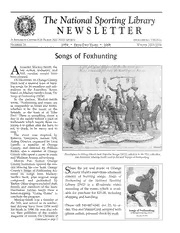
NSLM Newsletter - Winter 2006

ES 4755: GENERAL REQUIREMENTS FOR SAFETY OF LAMP CONTROL GEAR
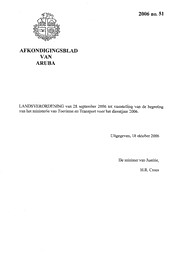
Afkondigingsblad van Aruba 2006 no. 51

New Zealand Listener - June 25, 2022
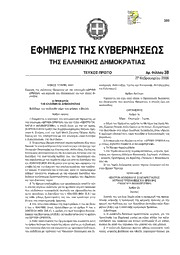
Greek Government Gazette: Part 1, 2006 no. 38
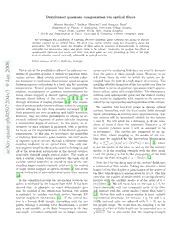
Distributed quantum computation via optical fibres
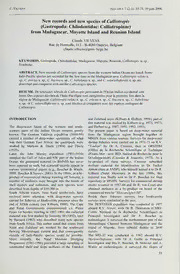
New records and new species of Calliotropis (Gastropoda : Chilodontidae
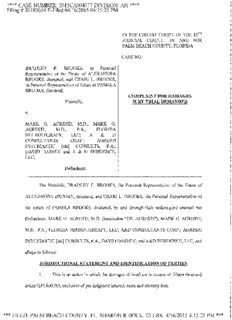
case nuiviber: 2015ca004377 division: ah
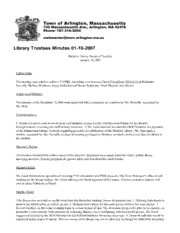
01102007-Minutes-Library
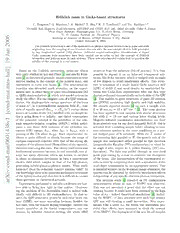
Frohlich mass in GaAs-based structures
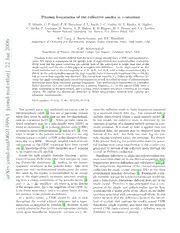
Pinning frequencies of the collective modes in $α$-uranium
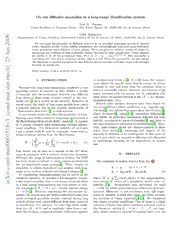
On the diffusive anomalies in a long-range Hamiltonian system

The Reach of a Chef: Beyond the Kitchen
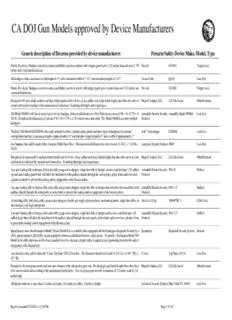
CA DOJ Gun Models Approved by Device Manufacturers






